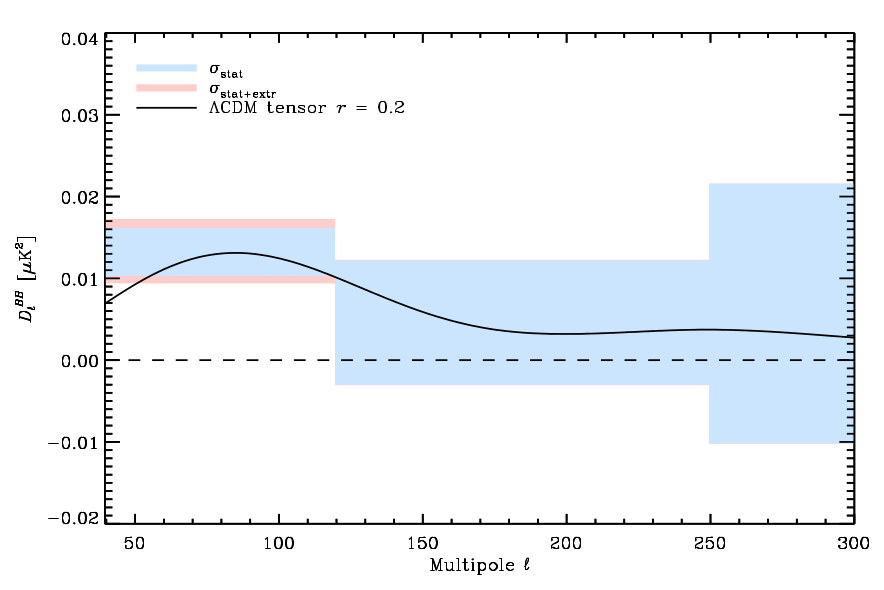This was the big story. Gravitational waves had been detected by their effects on the cosmic microwave background. The B modes had been observed with such a strong signature that they could only be explained by cosmic inflation. A big echo of a big bang writ large on the sky. What's more, the well financed international collaboration Planck had been beaten to the punch by the plucky underdogs of BICEP who braved the Antarctic cold to take their measurements. There was talk of Nobel prizes for inflation and for the observations that confirmed it.
Now this.

An figure showing the power spectrum in the region observed by Planck and BICEP. The shaded regions are the current 2014 dust polarization data [arXiv:1409.5738] . The solid line is a best fit provided by 2013 Planck data [arXiv:1409.5738] . In 2013 a spokesperson for the Planck collaboration felt comfortable stating at the April APS meeting that the data indicated no strong signal of B Mode polarization at that time, even though more analysis was needed. It seems his early read may have be proven right.
Planck intermediate results. XXX. The angular power spectrum of polarized dust emission at intermediate and high Galactic latitudes [arXiv:1409.5738] states these results. (translated into common US English form by myself)
I must state my own COI here. One of the models I have been working on, one which is to appear in ScienceOpen Research requires inflation. A model I've worked on much much more than the one which has been so controversial for me this last month. So, if anyone would love to see a good strong inflation signal it would be me.
That said, it may be that there simply is no strong signal of inflation. What will we do then? What will be the new standard model of cosmology? Perhaps some cyclic model or some big, bang less Eternal inflation of some sort. By October or November we should know the answers.
- The powerspecturm indicates that the uncertainty is comparable in magnitude to the BICEP2 measurements at these multipoles that correspond to the recombination bump. (These results can be explained by the recombination of pirmordial electrons and protons to make the first hydrogen atoms. No inflation required.)
- The frequency dependence of the observation across the Planck bands is consistent with the typical SED of dust polarization (Planck Collaboration Int. XXII 2014). (The observation is consistent with observing polarized galactic dust.)
- Assessing the dust contribution to the B-mode power measured by the BICEP2 experiment requires a dedicated joint analysis with Planck, incorporating all pertinent observational details of the two data sets, such as masking, filtering, and color corrections. (Further analysis is needed to rule out any sign of B-Mode observation by BICEP2.)
- We have identified regions in which the dust polarization observation amplitude may be significantly lower, by about a factor of 2, than in the BICEP2 observing region. (There may be other places to look for the B Mode signal. Planck's all sky observations should be able to settle this.)
I must state my own COI here. One of the models I have been working on, one which is to appear in ScienceOpen Research requires inflation. A model I've worked on much much more than the one which has been so controversial for me this last month. So, if anyone would love to see a good strong inflation signal it would be me.
That said, it may be that there simply is no strong signal of inflation. What will we do then? What will be the new standard model of cosmology? Perhaps some cyclic model or some big, bang less Eternal inflation of some sort. By October or November we should know the answers.




Comments